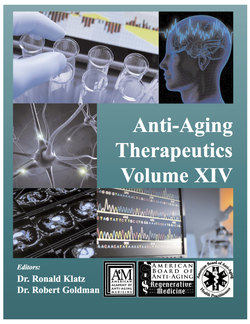Читать книгу Anti-Aging Therapeutics Volume XIV - A4M American Academy - Страница 8
На сайте Литреса книга снята с продажи.
CELL-ASSISTED FACIAL FAT TRANSFER Technique
ОглавлениеAutologous fat transfer has been limited by the viability of the grafted adipocytes. Both graft and host issues contribute to this. Graft issues include both the harvesting technique and implantation technique. Host issues include the presence of systemic inflammatory disease and small vessel integrity, including the use of vasoconstrictors such as decongestants and nicotine.
Fat harvesting is performed by a “mini lipo procedure” designed to minimize trauma to the fragile adipocytes. First, a suitable area of subcutaneous fat is anesthetized using a tumescent technique with 0.05-0.10 lidocaine plus 1:1,000,000 epinephrine. The fat is extracted using: 1) gentle suction in the range of one half atmosphere (15-18 inches mercury or 350-370 mm mercury), 2) blunt cannula designed to minimize trauma, 3) decreased exposure to air, 4) low G-force (50 G) centrifugation or gravity density separation and 5) removal of free lipid. Each of these interventions has the aim of preserving the lobular architecture of adipocytes and optimizing graft survival. Equally important is preparing the host tissues by minimizing nicotine and other toxins and by optimizing nutrition.
The ADSCs are obtained by processing a portion (60-100 mL) of harvested adipocytes by incubating with an enzyme and then separating the stromal vascular fraction (SVF) with centrifugation. The SVF also contains pre-adipoctyes, endothelial cells, smooth muscle cells, fibroblasts, NK cells, endothelial progenitor cells, and growth factors.
The third component of the autologous “mixture” to be transplanted is the platelet rich portion of plasma. This is obtained by double centrifugation of a sample of the patient’s peripheral blood. PRP has increased quantities of multiple growth factors including EGF, PDGF, TGF-beta, VEGF, and FGF. The three components are then combined by gentle mixing prior to re-implantation.
